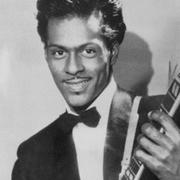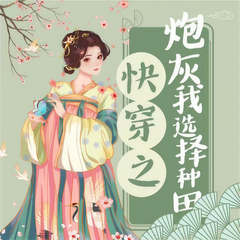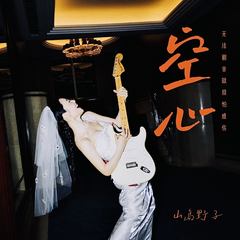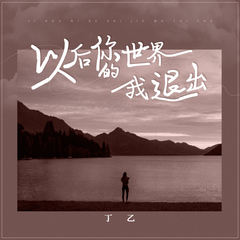Chuck Berry
1926年,查克·贝里出生于美国的圣路易斯,童年时就在教堂的唱诗班里唱歌,中学时学习吉他,后来又学习钢琴和萨克斯管。贝里从小就在黑人音乐的熏陶下长大,特别是节奏布鲁斯,是他的主要音乐根基。 对于贝里来说,除了他的歌曲以外,它的歌词创作和吉他演奏都对摇滚乐产生过重大影响。贝里的歌词,与当时一般摇滚乐的陈词滥调或无意义的音节相比,水平显得要高些。它一定程度上反映了50年代美国新一代青少年的心理和要求。贝里的演唱采用呼喊式的风格,但发音比较清楚。他的吉他演奏更是迎来了大量的追随者。可以这么说,在吉他天才吉米·亨德里克斯(Jimi Hendrix)出现的前十年,贝里为摇滚乐的吉他风格树立了样板。 布鲁斯、乡村、一点点的拉丁…在上个世纪五十年代中期,Chuck Berry将这些音乐风格全部融入到了他的个人招牌式的摇滚当中。作为当时的吉他灵魂人物之一,Chuck创造了最基本的12小节摇滚solo的乐句模式,他的吉他licks至今仍被众多的吉他手模仿和研究。他在舞台上弹奏吉他时跳着滑稽的"鸭子步"和煽情的摇摆舞也是让众多歌迷疯狂地爱上吉他音乐的原因。六十年代,两支欧美最受欢迎的摇滚乐队Beatles和the Rolling Stones都受到了Chuck Berry的影响。可以说正是Chuck这位黑人开创了白人摇滚的神话。忘记"猫王"吧,Chuck Berry才是真正的摇滚乐之父。他汇集布鲁斯和乡村音乐的风格,以激烈的吉他演奏标志着吉他这种乐器开始成为摇滚乐中的重要角色。Berry用大音量的吉他licks和充满暗示的歌词着实把50年代的一本正经的听众们惊呆了。人们从那时开始意识到摇滚乐有着超越贝多芬的力量。显示活力的double stop(在独奏中同时弹奏两个和弦音)和轻松幽默的推弦是他的演奏特点。Chuck Berry有时很像一个马戏团里的表演者:他把吉他放在脑袋后面或者双腿之间弹奏,像鸭子那样走路。他从中享受着莫大的乐趣,一切在他手中,都显得如此的从容自然。当一支乐队开始操练他们的音乐的时候,他们必须听一听Chuck Berry。如果你想学习摇滚乐,如果你想玩摇滚乐,你就得从听Chuck Berry开始,没办法,这是必须完成的功课。”Chuck Berry在37年前,说:“超越贝多芬,把这个消息告诉柴柯夫斯基。”他凝缩了1956年摇滚乐迷们对古典音乐的态度。如今摇滚乐的历史并未按照当年乐迷们的最基本的观点写下去。 摇滚乐的历史是由那些诸如Chuck Berry本人等根本不屑一顾、根本不注意他们来自何处,并写出十分美妙音乐的音乐家们写下去的。作为杰出的词曲作者、歌手和乐手, Chuck Berry已成为以后那些富于自制力的摇滚艺术家们卓越的楷模。如果没有他,The Rolling Stones乐队的Keith Richard乃至Bob Dylan甚至Beatles的出现都是不可想象的。Berry创造了青少年们自己的民谣,展现了亚文化群的语言、习俗、风格、态度和日常生活(例如 School Days一曲中表现的枯燥的学校生活)。对于他目睹并经历过的社会病,他也不曾回避:Brown-Eyed Handsome Man一曲中反映的种族歧视问题;Memphis一曲中反映的单亲家庭问题;Too Much Monkey Business一曲中对单调工作的厌烦等等。《The Great Twenty-Eight》是Berry的拉什莫尔峰(美国南达科他州的一座着名山峰,其上雕刻有华盛顿、杰斐逊、林肯和西奥多·罗斯福的巨大石头像),直至今日,它仍是不容超越的Of all the early breakthrough rock & roll artists, none is more important to the development of the music than Chuck Berry. He is its greatest songwriter, the main shaper of its instrumental voice, one of its greatest guitarists, and one of its greatest performers. Quite simply, without him there would be no Beatles, Rolling Stones, Beach Boys, Bob Dylan, nor a myriad others. There would be no standard "Chuck Berry guitar intro," the instrument's clarion call to get the joint rockin' in any setting. The clippety-clop rhythms of rockabilly would not have been mainstreamed into the now standard 4/4 rock & roll beat. There would be no obsessive wordplay by modern-day tunesmiths; in fact, the whole history (and artistic level) of rock & roll songwriting would have been much poorer without him. Like Brian Wilson said, he wrote "all of the great songs and came up with all the rock & roll beats." Those who do not claim him as a seminal influence or profess a liking for his music and showmanship show their ignorance of rock's development as well as his place as the music's first great creator. Elvis may have fueled rock & roll's imagery, but Chuck Berry was its heartbeat and original mindset. He was born Charles Edward Anderson Berry to a large family in St. Louis. A bright pupil, Berry developed a love for poetry and hard blues early on, winning a high school talent contest with a guitar-and-vocal rendition of Jay McShann's big band number, "Confessin' the Blues." With some local tutelage from the neighborhood barber, Berry progressed from a four-string tenor guitar up to an official six-string model and was soon working the local East St. Louis club scene, sitting in everywhere he could. He quickly found out that black audiences liked a wide variety of music and set himself to the task of being able to reproduce as much of it as possible. What he found they really liked — besides the blues and Nat King Cole tunes — was the sight and sound of a black man playing white hillbilly music, and Berry's showmanlike flair, coupled with his seemingly inexhaustible supply of fresh verses to old favorites, quickly made him a name on the circuit. In 1954, he ended up taking over pianist Johnny Johnson's small combo and a residency at the Cosmopolitan Club soon made the Chuck Berry Trio the top attraction in the black community, with Ike Turner's Kings of Rhythm their only real competition. But Berry had bigger ideas; he yearned to make records, and a trip to Chicago netted a two-minute conversation with his idol Muddy Waters, who encouraged him to approach Chess Records. Upon listening to Berry's homemade demo tape, label president Leonard Chess professed a liking for a hillbilly tune on it named "Ida Red" and quickly scheduled a session for May 21, 1955. During the session the title was changed to "Maybellene" and rock & roll history was born. Although the record only made it to the mid-20s on the Billboard pop chart, its overall influence was massive and groundbreaking in its scope. Here was finally a black rock & roll record with across-the-board appeal, embraced by white teenagers and Southern hillbilly musicians (a young Elvis Presley, still a full year from national stardom, quickly added it to his stage show), that for once couldn't be successfully covered by a pop singer like Snooky Lanson on Your Hit Parade. Part of the secret to its originality was Berry's blazing 24-bar guitar solo in the middle of it, the imaginative rhyme schemes in the lyrics, and the sheer thump of the record, all signaling that rock & roll had arrived and it was no fad. Helping to put the record over to a white teenage audience was the highly influential New York disc jockey Alan Freed, who had been given part of the writers' credit by Chess in return for his spins and plugs. But to his credit, Freed was also the first white DJ/promoter to consistently use Berry on his rock & roll stage show extravaganzas at the Brooklyn Fox and Paramount theaters (playing to predominately white audiences); and when Hollywood came calling a year or so later, also made sure that Chuck appeared with him in Rock! Rock! Rock!, Go, Johnny, Go!, and Mister Rock'n'Roll. Within a years' time, Chuck had gone from a local St. Louis blues picker making 15 dollars a night to an overnight sensation commanding over a hundred times that, arriving at the dawn of a new strain of popular music called rock & roll. The hits started coming thick and fast over the next few years, every one of them about to become a classic of the genre: "Roll Over Beethoven," "Thirty Days," "Too Much Monkey Business," "Brown Eyed Handsome Man," "You Can't Catch Me," "School Day," "Carol," "Back in the U.S.A.," "Little Queenie," "Memphis, Tennessee," "Johnny B. Goode," and the tune that defined the moment perfectly, "Rock and Roll Music." Berry was not only in constant demand, touring the country on mixed package shows and appearing on television and in movies, but smart enough to know exactly what to do with the spoils of a suddenly successful show business career. He started investing heavily in St. Louis area real estate and, ever one to push the envelope, opened up a racially mixed nightspot called the Club Bandstand in 1958 to the consternation of uptight locals. These were not the plans of your average R&B singers who contented themselves with a wardrobe of flashy suits, a new Cadillac, and the nicest house in the black section. Berry was smart with plenty of business savvy and was already making plans to open an amusement park in nearby Wentzville. When the St. Louis hierarchy found out that an underage hat-check girl Berry hired had also set up shop as a prostitute at a nearby hotel, trouble came down on Berry like a sledgehammer on a fly. Charged with transporting a minor over state lines (the Mann Act), Berry endured two trials and was sentenced to federal prison for two years as a result. He emerged from prison a moody, embittered man. But two very important things had happened in his absence. First, British teenagers had discovered his music and were making his old songs hits all over again. Second, and perhaps most important, America had discovered the Beatles and the Rolling Stones, both of whom based their music on Berry's style, with the Stones' early albums looking like a Berry song list. Rather than being resigned to the has-been circuit, Berry found himself in the midst of a worldwide beat boom with his music as the centerpiece. He came back with a clutch of hits ("Nadine," "No Particular Place to Go," "You Never Can Tell"), toured Britain in triumph, and appeared on the big screen with his British disciples in the groundbreaking T.A.M.I. Show in 1964. Berry had moved with the times and found a new audience in the bargain and when the cries of "yeah-yeah-yeah" were replaced with peace signs, Berry altered his live act to include a passel of slow blues and quickly became a fixture on the festival and hippie ballroom circuit. After a disastrous stint with Mercury Records, he returned to Chess in the early '70s and scored his last hit with a live version of the salacious nursery rhyme, "My Ding a Ling," yielding Berry his first official gold record. By decade's end, he was as in demand as ever, working every oldies revival show, TV special, and festival that was thrown his way. But once again, troubles with the law reared their ugly head and 1979 saw Berry headed back to prison, this time for income tax evasion. Upon release this time, the creative days of Chuck Berry seemed to have come to an end. He appeared as himself in the Alan Freed bio-pic, American Hot Wax, and was inducted into the Rock & Roll Hall of Fame, but steadfastly refused to record any new material or even issue a live album. His live performances became increasingly erratic, with Berry working with terrible backup bands and turning in sloppy, out-of-tune performances that did much to tarnish his reputation with younger fans and oldtimers alike. In 1987, he published his first book, Chuck Berry: The Autobiography, and the same year saw the film release of what will likely be his lasting legacy, the rockumentary Hail! Hail! Rock'n'Roll, which included live footage from a 60th-birthday concert with Keith Richards as musical director and the usual bevy of superstars coming out for guest turns. But for all of his off-stage exploits and seemingly ongoing troubles with the law, Chuck Berry remains the epitome of rock & roll, and his music will endure long after his private escapades have faded from memory. Because when it comes down to his music, perhaps John Lennon said it best, "If you were going to give rock & roll another name, you might call it 'Chuck Berry'."


 Johnny B. Goode - Chuck Berry
Johnny B. Goode - Chuck Berry




























![[STATION] aespa《Dreams Come True》MV Teaser - aespa (에스파)](https://img2.kuwo.cn/wmvpic/324/79/54/2120387380.jpg?imageView2/1/w/195/h/130/format/jpg/q/60)





